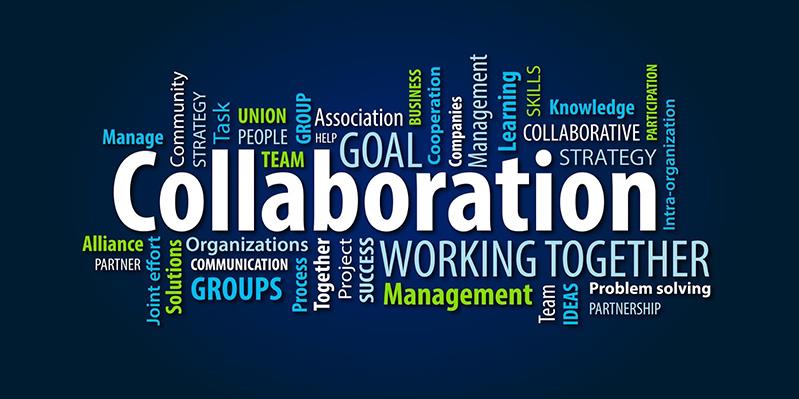9 Collaboration Tips For New Project Managers To Maximize Productivity
Newly minted managers coming into a project management role can find its challenges intimidating. Effective project management is one of the cornerstones of any successful business.
Guiding a project successfully from initiation through to completion and resourcing the project correctly to ensure diligent team project management is crucial to meeting the project requirements.
Why Collaboration Is Important
One of the most important aspects of project management is ensuring the project members jell as a team and collaborate productively. Often this involves using some form of team collaboration software.
Collaboration has always been an important facet of business, albeit one that was only recently recognized as such with the advent of the Internet, the rise of social media and the development of online collaboration tools to span geographical boundaries by connecting dispersed team members and supplier representatives.
What Is Project Collaboration?
Collaboration is an essential part of modern project management so understanding the basics of project collaboration is a fundamental part of project management.
Project collaboration describes how team members work together to complete a project, as well as ensuring they enjoy access to the proper tools to deliver the project. It basically describes the inner processes that come under the direction of a project manager.
Project collaboration can be done within a physical office. Usually, however, the term is used to refer to team collaboration software with its built-in set of collaboration tools. Online collaboration tools allow remote workers to meet, discuss projects, and carry out specific tasks within a virtual workspace. Intranet document management, wikis, blogs, and projects can all be managed from start to finish without anyone having to be in the same room.
Key Project Management Success Factors

Three key factors usually determine the success or failure of a project:
- Excellent top-down and bottom-up communication, ensuring everyone is on the same page with updates and status reports on progress, challenges, and achievements
- Organized and collaborative project management ensures all work is completed on time and within budget
- Collaboration between team members and across departments and supplier networks to source problem-solving ideas and access innovation.
But it’s an error to focus on each aspect in isolation. You can improve in all three areas by focusing on just one aspect of work: your collaborative project management. Refining this will enable everyone from the CEO on down to communicate with colleagues, manage projects and ideas, work together on tasks, and deliver outcomes efficiently.
The best way to improve your collaborative project management is to enable your team with an online collaboration tool.
9 Collaboration Tips For New Project Managers
Here are our top nine tips for new project managers on handling collaboration with peers and clients:
1. You need a tool that updates in real time
Most cloud-based and online software allow your team to share and monitor updates in real time. As soon as a change is made, that change is visible to the team. That avoids your team ever accidentally working with outdated information ensuring the work moves forward smoothly and efficiently.
2. Colleagues need to be able to work at the same time
Live collaboration is the new benchmark of effective team collaboration. One of the first popular tools of this type was Google Docs, one person updates the online document, and another person can edit simultaneously or simply watch the process as it’s happening. ProProfs Project is a collaborative project management tool that provides the same real-time collaboration capabilities on tasks and projects.
3. You can discuss work at the source
Instead of keeping conversations in one tool and your outputs in another, team collaboration software allows you to hold conversations where work is being done. This way, if you bring someone new into your project or if you need to hand over work, you can share past decision-making and project-related conversations.
4. You need an online team room to store and manage project information
It’s common to retain information in several different places; email inboxes, cloud file folders, and team member hard drives. That makes it difficult to ensure your team is working with the latest information.
To improve your collaborative project management, migrate to a single online team project management site to store everything related to the project; be it one-off tasks, long-term projects, files, conversations, meeting notes, and reports.
5. Instant updates on project changes
Every team needs to change project details, priorities or timelines at one point or another. Your online tool should allow you to update work and notify your team immediately, so everyone is always working on the most important tasks with the most accurate information.
6. Teams should be able to see their future schedule
Effective project management software allows you to plan for future tasks and projects using scheduling, Gantt charts and interdependencies. You’ll be able to logically organize your tasks and projects, set up workflows to move work from beginning to end, monitor progress to make sure nothing falls behind, and check in with colleagues to see if they need help. As one project is ending, your team can immediately start on the next priority work.
7. Improved Brainstorming
Dynamic problem solving is one of the key aspects that distinguish highly productive teams from less effective project teams. Enabling a team to brainstorm regardless of their physical location where they can share insights and bounce ideas off each other improves both the quality of ideas and of problem resolution.
8. Enhance Project Team Relationships
If employees lack the opportunity or capability to collaborate with each other, a problem soon emerges on a project. Great project management actively looks for way to connect team members regardless of how dispersed geographically they may be.
As employees collaborate with each other, get to know each other better, and gain a better understanding of each other's working style, which saves time and energy during the project.
9. Focus on collaboration, not office space
For many projects, renting or owning a physical office can impose significant costs and actually reduce collaboration. Online collaboration tools allow employees to work together without having to come into the office, saving your company money for office space you no longer need.
Conclusion
One of the most challenging parts of being a new project manager is bringing the team together to work effectively as a unit. When effectively combined, project management and project collaboration can be useful approaches for solving complex problems both on projects and in business. It can take some time to harness the power of collaboration, but most project managers find their projects run smoothly after their team gets used to working with team collaboration software.
Related Posts
Confused About Hiring A Scrum Master Or Product Owner? Here's All The Details You Need About The Two
Scrum Masters and Product Owners bring massive value to the table by helping organizations provide greater customer satisfaction, improving cycle times and ensuring faster time to market, higher quality, better progress visibility, more available ownership, and collaboration.
Can Digital Marketing as a creative industry benefit from the structured and systematic project management processes that are at the core of the advanced software development tools?
When you’re a versed remote worker, you’re already familiar with all the ins and outs of boosting your efficiency on a daily basis, not to mention time management and smart task organization.
Agile software development is really just an umbrella term. The term is basically for a set of frameworks which are based on the values and principles put forth in the Manifesto for Agile Software Development
To build a business you need to first be a leader who adheres to classic principles and be aware of their surroundings as well as in Project Management.


















Comments
comments powered by Disqus